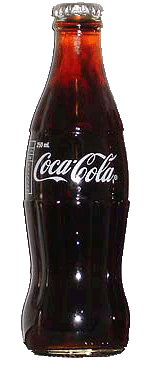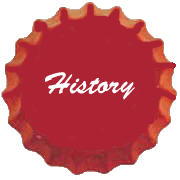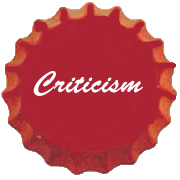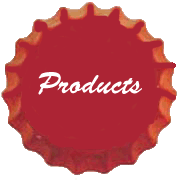Logo design
The![]() famous Coca-Cola logo was created by John Pemberton's
bookkeeper, Frank Mason Robinson, in 1885. Robinson came up with
the name and chose the logo's distinctive cursive script. The
typeface used, known as Spencerian script, was developed in the
mid 19th century and was the dominant form of formal handwriting
in the United States during that period.
famous Coca-Cola logo was created by John Pemberton's
bookkeeper, Frank Mason Robinson, in 1885. Robinson came up with
the name and chose the logo's distinctive cursive script. The
typeface used, known as Spencerian script, was developed in the
mid 19th century and was the dominant form of formal handwriting
in the United States during that period.
Robinson also played a significant role in early Coca-Cola advertising. His promotional suggestions to Pemberton included giving away thousands of free drink coupons and plastering the city of Atlanta with publicity banners and streetcar signs.
Contour bottle design
The equally famous Coca-Cola bottle, called the "contour bottle" within the company, but known to some as the "hobble skirt" bottle, was created in 1915 by bottle designer Earl R. Dean. In 1915, the Coca-Cola Company launched a competition among its bottle suppliers to create a new bottle for the beverage that would distinguish it from other beverage bottles, "a bottle which a person could recognize even if they felt it in the dark, and so shaped that, even if broken, a person could tell at a glance what it was."
Chapman J. Root, president of the Root Glass Company, turned
the project over to members of his supervisory staff, including
company auditor T. Clyde Edwards, plant superintendent Alexander
Samuelsson, and Earl R. Dean, bottle designer and supervisor of
the bottle molding room. Root and his subordinates decided to
base the bottle's design on one of the soda's two ingredients,
the coca leaf or the kola nut, but were unaware of what either
ingredient looked like. Dean and Edwards went to the Emeline
Fairbanks Memorial Library and were unable to find any
information about coca or kola. Instead, Dean was inspired by a
picture of the gourd-shaped cocoa pod in the Encyclopedia
Britannica. Dean made a rough sketch of the pod and returned
back to the plant to show Mr. Root. He explained to Root how he
could transform the shape of the pod into a bottle. Chapman Root
gave Dean his approval.
molding room. Root and his subordinates decided to
base the bottle's design on one of the soda's two ingredients,
the coca leaf or the kola nut, but were unaware of what either
ingredient looked like. Dean and Edwards went to the Emeline
Fairbanks Memorial Library and were unable to find any
information about coca or kola. Instead, Dean was inspired by a
picture of the gourd-shaped cocoa pod in the Encyclopedia
Britannica. Dean made a rough sketch of the pod and returned
back to the plant to show Mr. Root. He explained to Root how he
could transform the shape of the pod into a bottle. Chapman Root
gave Dean his approval.
Faced with the upcoming scheduled maintenance of the mold-making machinery, over the next 24 hours Dean sketched out a concept drawing which was approved by Root the next morning. Dean then proceeded to create a bottle mold and produced a small number of bottles before the glass-molding machinery was turned off.
Chapman Root approved the prototype bottle and a design patent was issued on the bottle in November, 1915. The prototype never made it to production since its middle diameter was larger than its base, making it unstable on conveyor belts. Dean resolved this issue by decreasing the bottle's middle diameter. During the 1916 bottler's convention, Dean's contour bottle was chosen over other entries and was on the market the same year. By 1920, the contour bottle became the standard for the Coca-Cola Company. Today, the contour Coca-Cola bottle is one of the most recognized packages on the planet..."even in the dark!".
As a reward for his efforts, Dean was offered a choice between a $500 bonus or a lifetime job at the Root Glass Company. He chose the lifetime job and kept it until the Owens-Illinois Glass Company bought out the Root Glass Company in the mid-1930s. Dean went on to work in other Midwestern glass factories.
Although endorsed by some, this version of events is not considered authoritative by many who consider it implausible. One alternative depiction has Raymond Loewy as the inventor of the unique design, but, while Loewy did serve as a designer of Coke cans and bottles in later years, he was in the French Army the year the bottle was invented and did not emigrate to the United States until 1919. Others have attributed inspiration for the design not to the cocoa pod, but to a Victorian hooped dress.
In 1944, Associate Justice Roger J. Traynor of the Supreme Court of California took advantage of a case involving a waitress injured by an exploding Coca-Cola bottle to articulate the doctrine of strict liability for defective products. Traynor's concurring opinion in Escola v. Coca-Cola Bottling Co. is widely recognized as a landmark case in U.S. law today.
In 1997, Coca-Cola also introduced a "contour can," similar in shape to its famous bottle, on a few test markets, including Terre Haute, Indiana. The new can has never been widely released.
A new slim and tall can began to appear in Australia as of December 20, 2006, it cost AU$1.95. The cans have a distinct resemblance to energy drinks that are popular with teenagers. The cans were commissioned by Domino's Pizza and are available exclusively at their restaurants.
In January 2007, Coca-Cola Canada changed "Coca-Cola Classic" labeling, removing the "Classic" designation, leaving only "Coca-Cola." Coca-Cola stated this is merely a name change and the product remains the same. The cans still bear the "Classic" logo in the United States.
Coca-Cola is a registered trademark in most countries. The U.S. trademark for "Coca-Cola" was first filed on May 14, 1892 with the description "nutrient or tonic beverages". This filing became a registered United States trademark on January 31, 1893 and continues to be renewed through the end of December 2009. In the UK, Coca-Cola was registered with the UK Patent Office on July 11, 1922, under registration number 427817.
In 2007, Coca-Cola introduced an aluminum can designed to look like the original glass Coca-Cola bottles.
In 2007, the company's logo on cans and bottles changed. The
cans and bottles retained the red color
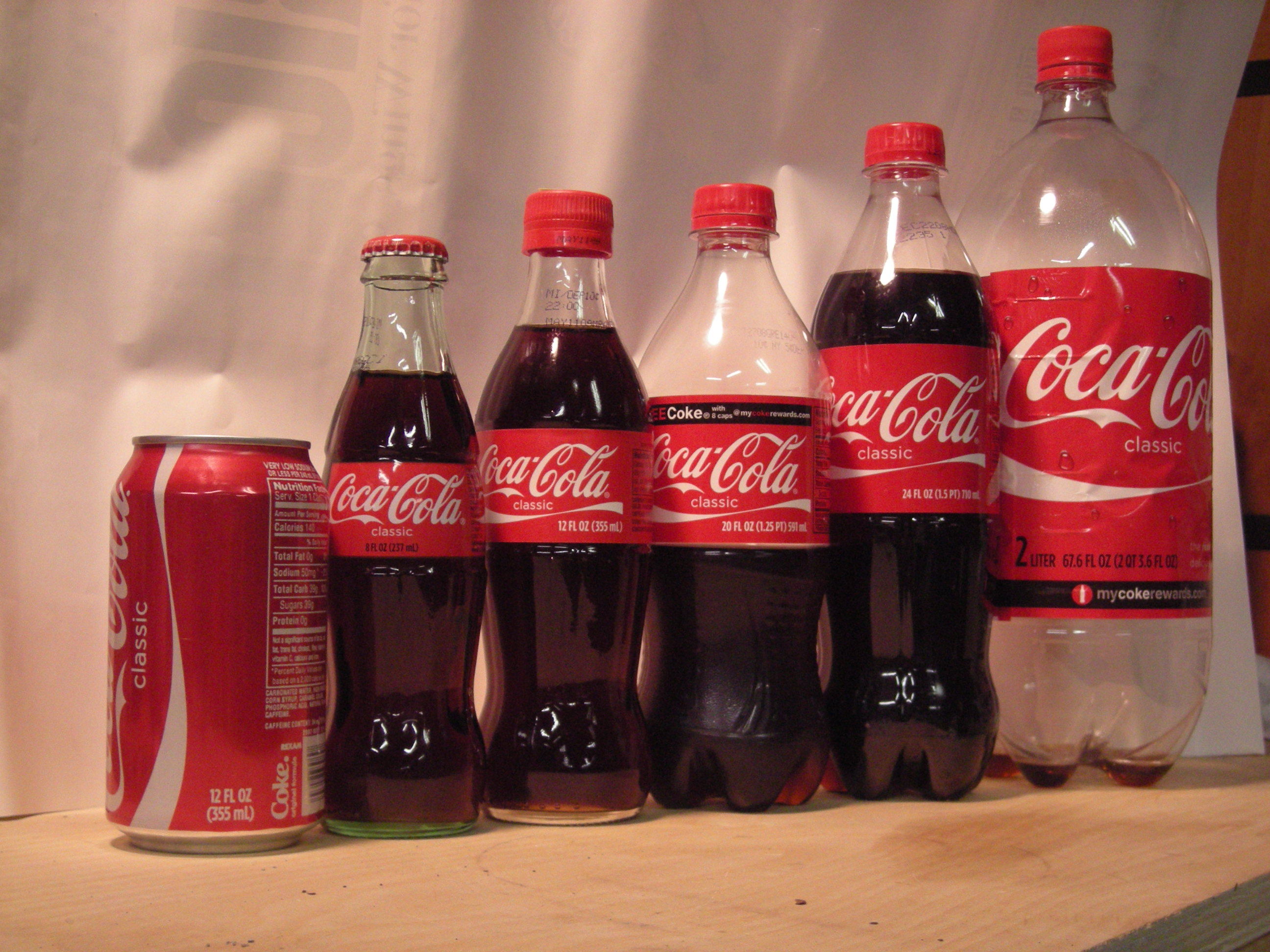 and familiar typeface,
but the design was simplified, leaving only the logo and a plain
white swirl (the "dynamic ribbon").
and familiar typeface,
but the design was simplified, leaving only the logo and a plain
white swirl (the "dynamic ribbon").
In 2008, in some parts of the world, the plastic bottles for all Coke varieties (including the larger 1.5- and 2-liter bottles) was changed to include a new plastic screw cap and a slightly taller contoured bottle shape, designed to evoke the old glass bottles.


